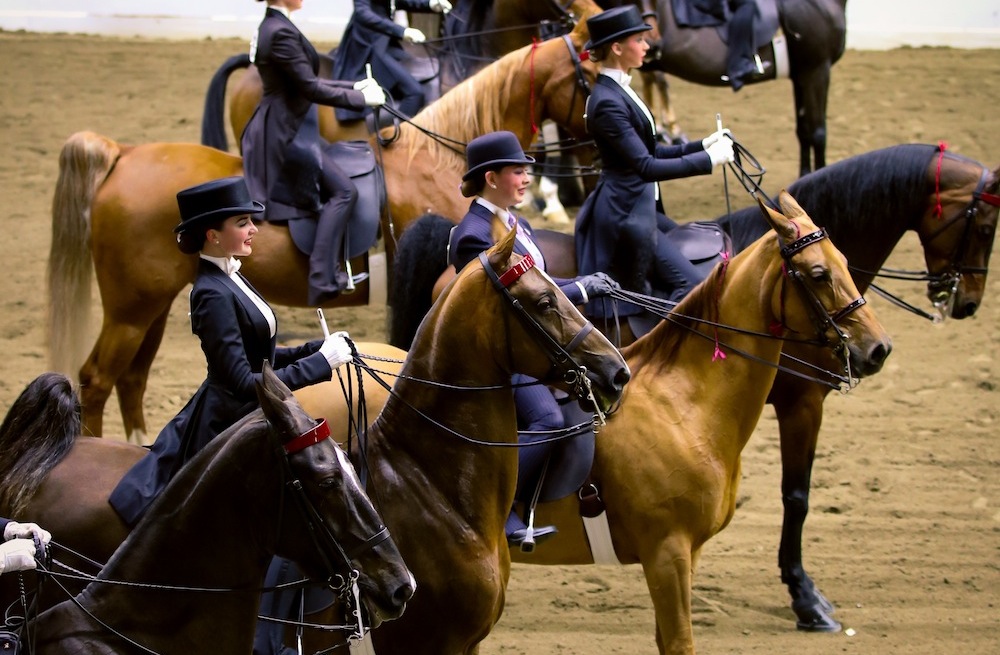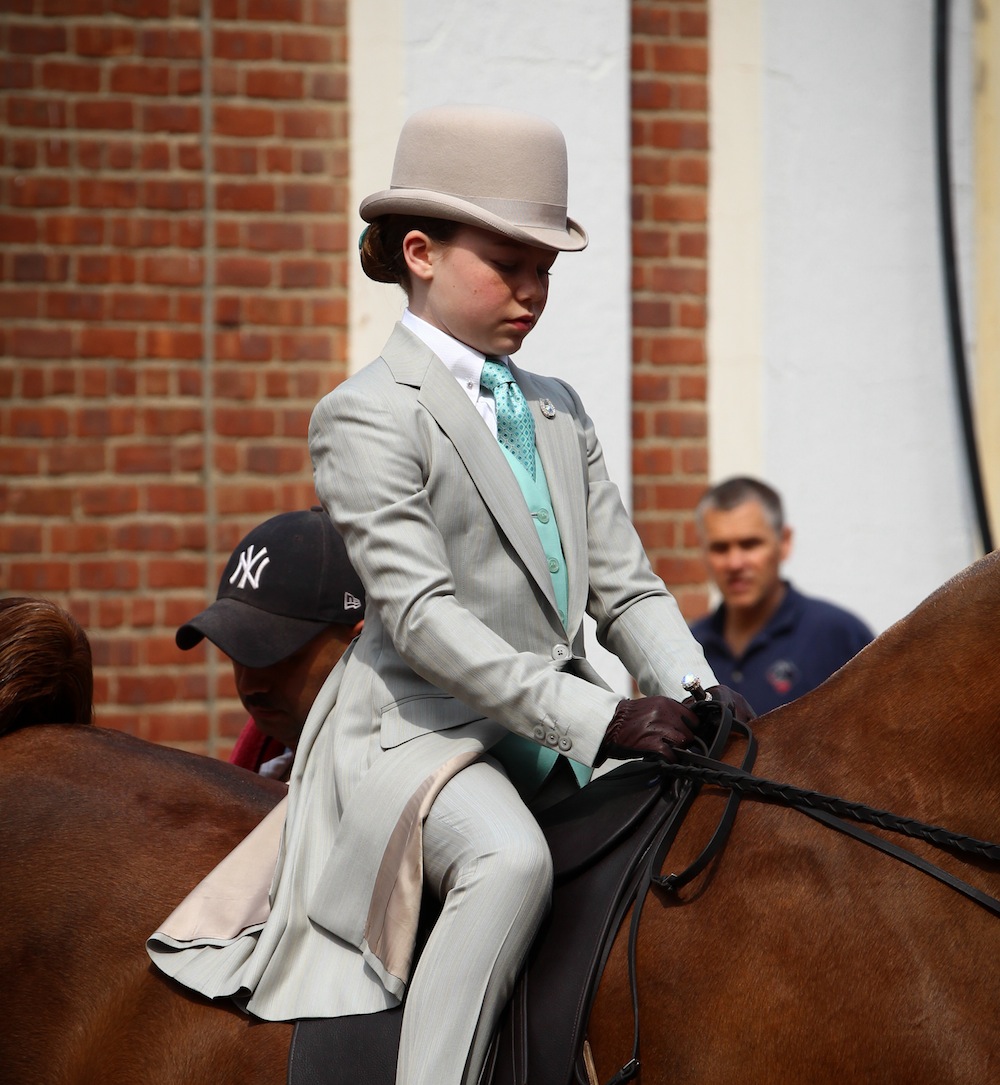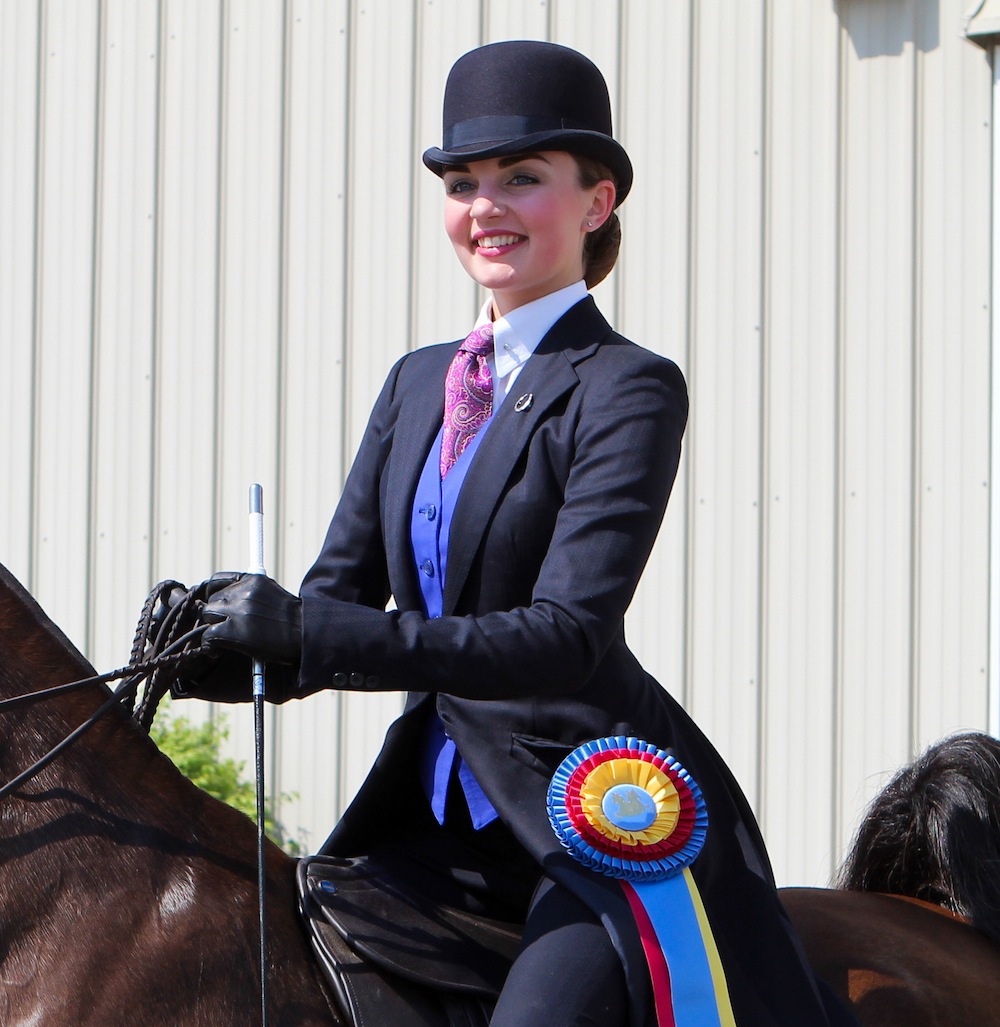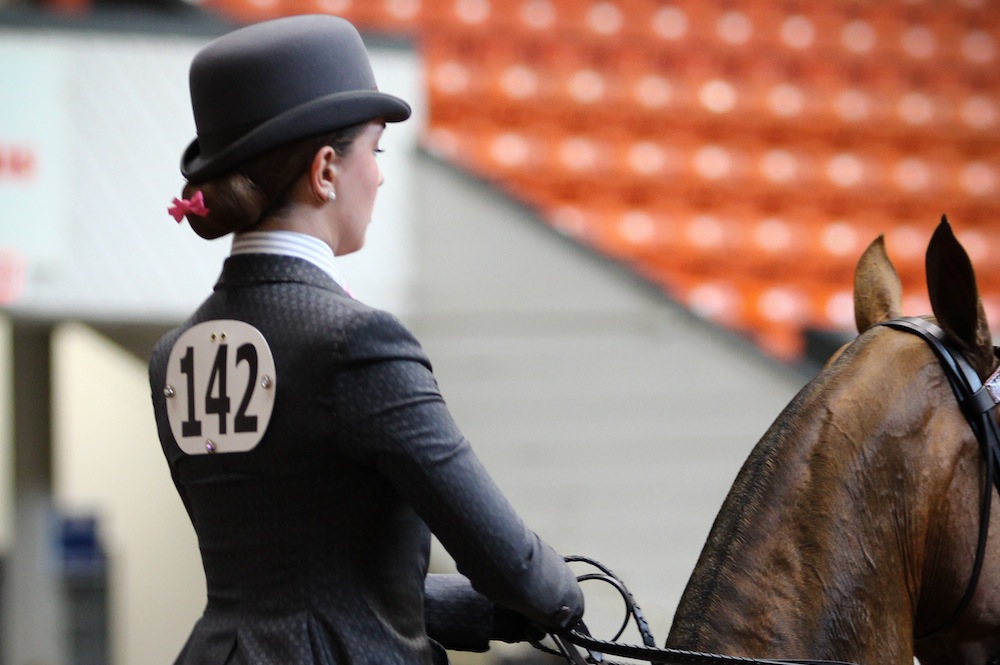
Choosing the “perfect" equitation horse can be a tall order. Whether you’re looking at a seasoned veteran or a new face in the division, the choice you make can have significant consequences for the equation rider. Finding the correct combination of riding style, size, and attitude is essential when you’re looking to pair your equitation rider with a new partner.
Where to start?
Most equitation horses do start out their careers as performance or pleasure horses, but some seem to be born ready to do patterns and carry a rider all the way to a national championship. So what makes a horse a good equitation prospect?
“Attitude and brains go a long way,” said USEF Saddle Seat Young Riders Coach Christy Parker.
At her Pine Haven Stables, Christy typically looks for a horse that is happy to do its job, steady in its headset and has a trot that is not too lofty. Patience is another key element that an equitation horse must possess. In addition to needing patience during their patterns, these horses will be required to stand quietly in the line up as the other teams complete their individual workouts, and a few lucky ones will have to endure the time-consuming “reverse pinning” of some of the equitation finals.
Endurance is another key quality for a top equitation horse. Through the early part of the show season, the horse will be asked to complete rail work and a pattern numerous times as the rider starts to qualify for the finals. At most of the finals, they will have to show in a preliminary rail ride and pattern, and then again that same evening in the final rail work and possibly another pattern. This is asking a lot of horses that give their all every time someone sits on their backs, so having a horse with a big heart and great stamina is a must.
While there are often reasons to select an equitation horse that is already proven, many equitation horses are selected as prospects, and learn the skills they need over a winter or two of work, so it is important to not only look at what the horse can do currently, but at what they might be able to do with some extra training.
 Devon Garone of Fairfield South, another coach for the 2017 USEF Young Riders Team, starts her equitation prospects with serpentines, circles, and bending. All of this is done to soften the horse’s mouth and get them accustomed to changing directions.
Devon Garone of Fairfield South, another coach for the 2017 USEF Young Riders Team, starts her equitation prospects with serpentines, circles, and bending. All of this is done to soften the horse’s mouth and get them accustomed to changing directions.
As the horse becomes more comfortable with the simple pattern elements, they can move onto the more difficult maneuvers like lead changes, pivoting and leg yields. Christy likes to add “simple things that set them up for success in the beginning.” Getting a horse to be comfortable trotting, cantering and stopping off the rail is also an important part of the equitation horse’s lessons.
Most of the initial training in pattern work is done in a training bridle or snaffle bit. Eventually the show bridle will be introduced, which for some horses will mean starting back with the more simple elements, while others will not be fazed at all by the addition of a curb bit. It is important to not drill the horses on pattern work, but instead get them comfortable with the various maneuvers they may be asked to do.
Matching the team
Of course, a horse can have all the right qualities to succeed in equitation and still be the wrong teammate for your rider, so it is important to consider your equitation rider’s attributes when selecting his or her mount.
“I’ve learned it’s best to never be in a rush to buy, but to be ready to jump when the right one comes along,” Christy said.

A lot of shopping for equitation horses happens in the late fall and early winter. Though travel plans to northern states can be impeded by snowfall and chilly temperatures, this seems to be the time when most horses became available because their previous rider has aged out, or is looking to step up for the following season. Shopping during this season also allows the new combination to have a few months to get used to each other before show season starts in the spring.
The rider’s age can additionally have a significant impact on the horse you are choosing. If they have a couple of years left before they age out, it is possible to look for a horse that is not fully equitated knowing that you have some time to “finish” it.
However, when it comes down it, a rider’s body type and riding style are the most important parts in picking out the perfect horse. Not all riders are comfortable on a horse that needs help steadying its headset or one that may need a little more motivation to move out. A rider that is all legs is able to fit a horse with a shorter neck better than a rider with a longer torso.
When Devon was looking for a new horse for her rider Taylor Pszeniczny, she knew exactly what they were looking for based on Taylor’s body style and riding abilities.
“I loved the way she looked on a quick trotting horse, and she’s always been comfortable with a horse light in the bridle,” Devon said. “When she tried out ‘Gipper’, it all just worked.”
Since there’s never such a thing as absolute perfection when it comes to horses, there will have to be some sort of compromise when matching a horse and rider.
“The Taylor and Gipper look was natural and poised and graceful, but we did always have to work on being powerful and captivating,” Devon said.
Sometimes these compromises can be hidden or minimized through rider attire, as a properly tailored suit, the right colors and accessories can help to highlight a horse and rider’s strengths while hiding their weaknesses.

It is extremely important to choose color combinations that complement the rider’s skin tones and the horse’s color, but there are some age considerations as well. Though lighter colored suits, like beige, gray, or silver, may be acceptable for walk & trotters, darker suits are preferred in the older age groups.
“Don't confuse ‘classic’ with ‘old’ or ‘boring,’” Devon said. “You want the suit to have some life to it, just try to have the riding and the horse be the main focus, with the suit complementing the performance.”
You also want to be mindful to highlight only what you want to highlight. If your horse needs a rider to be more active with their bridle, then white gloves with evening attire is probably not the way to go. On the flip side of that, if you have a rider who is extremely steady handed, then white gloves will help to accentuate this desirable trait. The same concept applies to lighter colored suits.
“The details make all the difference,” Christy said.
Finding the perfect equitation horse and putting the whole package together is like putting a puzzle together. Once all of the pieces are there, there’s nothing left to do but to buy the print and hang the beautiful picture on the wall.



